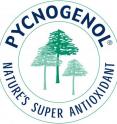Study shows pine bark improves circulation, swelling and visual acuity in early diabetic retinopathy
According to the National Institute of Health, 40 percent to 45 percent of Americans diagnosed with diabetes already have some stage of diabetic retinopathy. Diabetic retinopathy, damage to the retina caused by leaky blood vessels, is a major cause of blindness in people with diabetes and is one of the most feared diabetic complications. In fact, up to 80 percent of all patients who've had diabetes for 10 years or more will experience some form of diabetic retinopathy. A recent study published in the Journal of Ocular Pharmacology and Therapeutics reveals Pycnogenol® (pic-noj-en-all), an antioxidant plant extract from the bark of the French maritime pine tree, can improve microcirculation, retinal edema and visual acuity in the early stages of diabetic retinopathy.
"Previous research has shown that Pycnogenol® may reduce the progressing advanced stages of diabetic retinopathy," said Dr. Robert Steigerwalt, a lead researcher of the study. "While previous studies focused on the latent stages of diabetic retinopathy, the aim of this new study was to show the protective effects of Pycnogenol® in the early stages of this growing diabetic complication."
The randomized controlled study, conducted by G D'Annunzio University in Italy, investigated a total of 46 diabetic patients over a period of three months. The Pycnogenol® treatment group consisted of 24 patients, with 22 patients placed in a placebo treatment group. Each of the patients had been previously diagnosed with diabetes for at least four years prior to participating in the study and their blood glucose was well controlled by diet and oral anti-diabetic medication. Patients had early stage retinopathy characterized by capillaries in the eye leaking fluid into the retina causing swellings. At this stage only minor bleedings into the retina occur and damage to light-sensing cells may still remain largely reversible.
Subjects were treated with three 50 mg Pycnogenol® tablets (total 150 mg. of Pycnogenol®) or placebo tablets in the morning after breakfast over a period of three months. Following treatment with Pycnogenol®, the major positive observation of this study was visual improvement, which was subjectively perceived by 18 out of 24 patients in the Pycnogenol® group. Testing of visual acuity using the Snellen Chart (the standard eye chart used by eye care professionals to measure visual acuity) showed a significant improvement from baseline 14/20 to 17/20 after two months of treatment with Pycnogenol®. There were no improvements found in the control group.
The retina is considered swollen when the diameter of the macula exceeds 500 micro meters and treatment with Pycnogenol® significantly decreased the swellings below that level, as judged by the high resolution ultrasound imaging used in the study. Furthermore, the blood flow velocity in capillaries nourishing the light sensing cells improved. The authors suggest that both effects account for the improved vision of patients. In the control group, retinal edema was not relieved, blood flow velocity remained unaffected and no visual improvements occurred.
In contrast, all 22 subjects in the control group maintained the same diabetic macular swellings as they were diagnosed with at the beginning of the study.
"Pycnogenol® has been intensively investigated for decades to stop the progression of diabetic retinopathy and help patients to maintain their remaining eye sight," said Dr. Steigerwalt. "Our study suggests that Pycnogenol® taken in the early stages of retinopathy may enhance retinal blood circulation accompanied by a regression of edema, which favorably improves vision of patients. Pycnogenol® may be particularly beneficial for preventing this complication in diabetic patients, based on the large number of individuals who were diagnosed when the disease had already significantly progressed."
Over the past decade, numerous studies have been published on Pycnogenol's® health benefits for people living with diabetes. Most notably, research results on five clinical studies with over 1,000 diabetes patients showed that Pycnogenol® has the ability to seal leaky capillaries in the eye. This capability impedes the progression of vision loss in patients suffering from diabetic retinopathy.
Source: MWW Group
Other sources
- Study shows pine bark improves circulation, swelling and visual acuity in early diabetic retinopathyfrom Science BlogWed, 2 Dec 2009, 7:49:17 UTC
